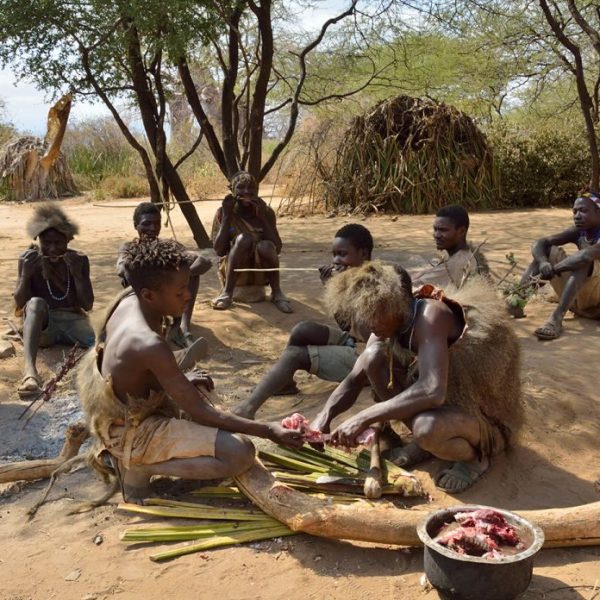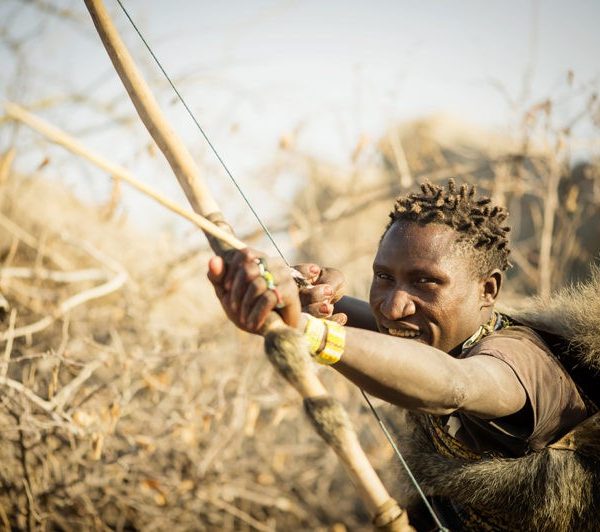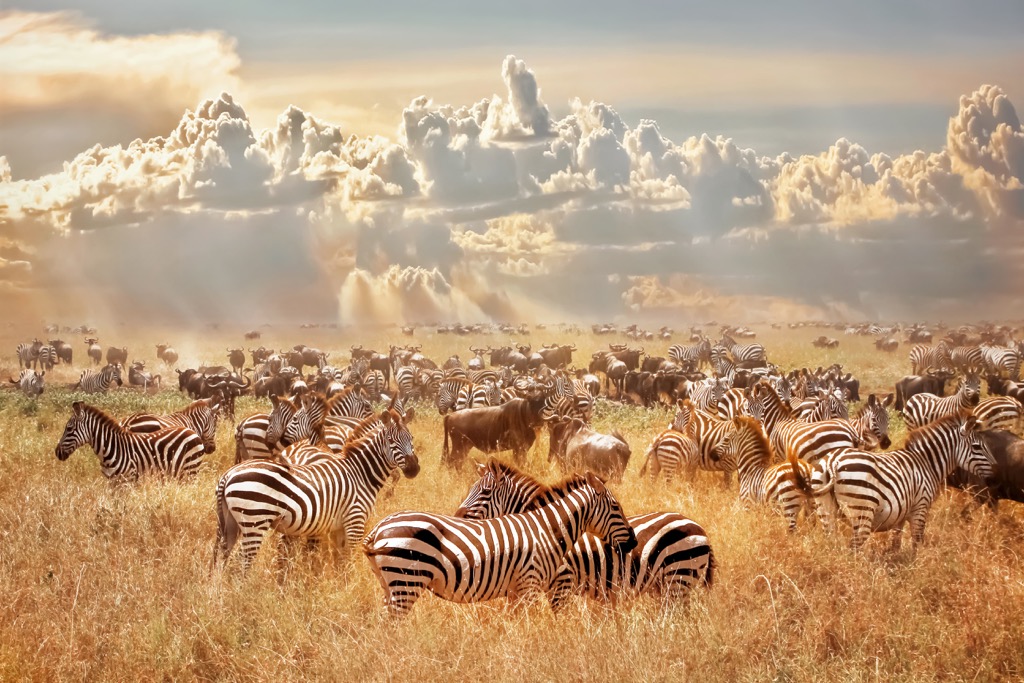Lake Eyasi
Nestled in the heart of Tanzania’s Rift Valley, Lake Eyasi is one of the country’s most stunning and least-visited natural wonders. While it’s not as famous as the nearby Serengeti or Ngorongoro Crater, Lake Eyasi offers a completely unique experience for travelers looking to immerse themselves in the authentic beauty and culture of Tanzania. From extraordinary wildlife to rich cultural encounters, Lake Eyasi is a destination for adventurers, culture seekers, and nature lovers alike.

Geography and Location
Lake Eyasi is a large, shallow, endorheic lake situated at the base of the Great Rift Valley in northern Tanzania. The lake is located to the south of the Serengeti and the Ngorongoro Conservation Area, making it a prime location for those seeking a less commercialized and more intimate experience in the region. The lake itself is not only geographically stunning, with its panoramic views of surrounding hills and savannah, but it also serves as a significant ecosystem, attracting diverse wildlife and indigenous communities.
The History of Lake Eyasi
Lake Eyasi is an ancient lake with a fascinating geological history. The lake sits within the Great Rift Valley, formed millions of years ago by tectonic activity that shaped the region’s dramatic landscapes. Over time, the lake has fluctuated in size due to the region’s seasonal rains and the climate’s influence on the ecosystem. Today, it is one of Tanzania’s lesser-known treasures, offering an untouched and serene atmosphere that contrasts with the bustling wildlife hotspots of the Serengeti.
Natural Beauty of Lake Eyasi
The natural landscape around Lake Eyasi is breathtaking. The lake is surrounded by low-lying hills and the vast, dry savannah that extends in every direction. The area is often referred to as one of Tanzania’s most peaceful and scenic spots. The lake is fringed with seasonal wetlands and marshes that come to life during the rainy season, providing a stunning contrast to the otherwise dry, arid terrain. The surrounding landscape is dotted with acacia trees, and the clear skies of the dry season provide panoramic views for those exploring the area.
During the dry season, the lake’s water levels decrease, leaving behind mud flats and salt pans. In contrast, the rainy season (from November to April) transforms the lake into a seasonal wonder, attracting a variety of migratory birds and other wildlife. The constantly shifting scenery around Lake Eyasi makes it a photographer’s paradise, as light and color change dramatically throughout the day.
Unique Wildlife and Birdlife
While Lake Eyasi is not known for the classic African safari game like lions or elephants, its unique appeal lies in the wildlife that thrives in this remote part of Tanzania. The lake and its surroundings offer a diverse range of birds, reptiles, and smaller animals.
- Birdlife: Lake Eyasi is a birdwatcher’s dream, particularly for those interested in migratory species. The lake hosts thousands of waterfowl, such as flamingos, pelicans, and storks, especially during the wet season. The marshes and wetlands around the lake are home to various species of wading birds, while the surrounding savannah provides a habitat for raptors, including the endangered Martial Eagle and African Fish Eagle.
- Wildlife: While large predators are scarce, smaller wildlife thrives around the lake. Antelope species like Grant’s gazelle and impala can be found grazing along the shores. The area is also home to various predators like hyenas and jackals, who thrive in the open savannah. You might also spot baboons, warthogs, and smaller mammals, making it a rewarding destination for wildlife enthusiasts looking for a more serene safari experience.
- Cultural significance of animals: For the indigenous communities living around Lake Eyasi, such as the Hadza and Datoga people, many of the animals in the area play a crucial role in their traditional lifestyles, from hunting and gathering to crafting and clothing.
Cultural Encounters with the Hadza and Datoga Tribes

One of Lake Eyasi’s most compelling draws is its cultural significance. The region is home to two of Tanzania’s most fascinating indigenous tribes: the Hadza and the Datoga.
- The Hadza are one of the last remaining true hunter-gatherer societies in the world. They live around the shores of Lake Eyasi, leading a nomadic lifestyle based on hunting, fishing, and foraging for wild plants and honey. Visitors to Lake Eyasi have the rare opportunity to join Hadza men on a hunting expedition, often with traditional bows and arrows. Learning how they track game, gather food, and live in harmony with nature is a powerful and humbling experience.
- The Datoga are known for their craftsmanship and their skills in metalworking and leather tanning. They are semi-nomadic pastoralists, and much of their culture revolves around cattle herding. Their jewelry, made from silver and beads, and their leather garments are distinctive aspects of their culture. A visit to the Datoga villages around Lake Eyasi offers a fascinating look into their traditional way of life, from their farming techniques to their social structures.
Activities at Lake Eyasi

There’s much to see and do at Lake Eyasi, whether you’re an adventurer or simply looking for a tranquil retreat.
- Cultural Tours: Spending time with the Hadza and Datoga people is the highlight of any visit to Lake Eyasi. Travelers can observe traditional activities such as hunting, gathering, and beadwork, or participate in a cultural exchange to learn about these ancient ways of life.
- Birdwatching: The birdlife around Lake Eyasi is exceptional, and a guided birding tour is highly recommended. From flamingos to various waterfowl and raptors, the birdwatching opportunities are unparalleled.
- Nature Walks: A guided walk around the lake’s shores is an excellent way to learn about the local flora and fauna, with knowledgeable guides sharing insights into the ecosystems of the area.
- Photography: With its dramatic landscapes and vibrant local cultures, Lake Eyasi is a fantastic location for photography enthusiasts. The mix of natural beauty, wildlife, and indigenous tribes makes it an ideal place to capture unique and memorable moments.
Best Time to Visit
The best time to visit Lake Eyasi depends on the kind of experience you’re looking for.
- Dry season (June to October): This period is ideal for wildlife viewing, as animals congregate around the lake’s remaining water sources. The weather is cooler, and the skies are clearer, making it perfect for nature walks and photography.
- Wet season (November to April): For birdwatchers, the wet season is the best time to visit, as migratory birds flock to the lake. The rains transform the landscape, bringing lush vegetation and a stunning array of wildlife.
How to Get There
Lake Eyasi is located about 90 kilometers south of the Ngorongoro Crater, making it accessible from major tourist destinations like Arusha and the Serengeti. The most common route is to drive from Karatu, which is about a two-hour drive from the lake. There are also small airstrips nearby for those looking to arrive by light aircraft.
Tips for Visiting Lake Eyasi
- Be prepared for a more rustic experience, as Lake Eyasi is a relatively remote area with limited infrastructure.
- Bring appropriate clothing for both hot and cool weather, as temperatures can vary significantly.
- Respect local customs and traditions, particularly when visiting indigenous tribes like the Hadza and Datoga.
Conservation Efforts and Sustainability
While Lake Eyasi is relatively untouched by mass tourism, there are ongoing efforts to protect the area’s wildlife and cultural heritage. Conservation initiatives are focused on maintaining the balance between preserving the natural environment and supporting the livelihoods of indigenous communities. Sustainable tourism practices are encouraged, and visitors are urged to minimize their environmental impact while enjoying the unique experience the area offers.
Why Visit Tanzania?

Tanzania is home to some of the world’s most iconic destinations, including:
- Serengeti National Park: Known for the Great Migration and incredible wildlife.
- Ngorongoro Crater: A UNESCO World Heritage site and one of the best places to see the Big Five.
- Mount Kilimanjaro: The highest peak in Africa, offering various trekking routes.
- Zanzibar: A tropical island paradise with pristine beaches and rich history.
No matter when you visit, Tanzania offers unparalleled opportunities for adventure, nature, and culture.
Best Time to Visit Tanzania

The best time to visit Tanzania depends on your experience preferences. For wildlife safaris, the dry season from June to October offers the best game viewing, while January to February is ideal for the Great Migration calving season in the Serengeti. If you’re climbing Mount Kilimanjaro, the best months are January to March and June to October for clear skies. Zanzibar’s beaches are perfect from June to October and December to February. Avoid the long rains (March to May) when some lodges close, though the landscape is lush and less crowded.
Understanding Tanzania's Seasons

Tanzania has two primary seasons: the dry season and the wet season. The timing of your trip will depend on your preferred activities, whether you want to enjoy wildlife safaris, beach vacations, or mountain trekking.
Dry Season (June to October): Best for Safaris and Wildlife Viewing
The dry season in Tanzania typically lasts from June to October. This is the most popular time for safaris, as it coincides with excellent wildlife viewing conditions. The dry season is ideal for those interested in seeing large game, including the Big Five.
- Weather: Warm and sunny, with temperatures ranging from 25°C (77°F) to 30°C (86°F). Nights are cooler, especially in higher altitudes like the Ngorongoro Crater.
- Wildlife: During this period, animals congregate around waterholes, and vegetation is sparse, making wildlife easier to spot. This is also the time to witness the Great Migration in the Serengeti, especially from July to October, when thousands of wildebeest cross the Mara River.
- Why Visit: Ideal for a safari experience with clear skies, fewer mosquitoes, and the best chance of seeing a variety of wildlife.
Wet Season (March to May): Best for Lush Landscapes and Fewer Crowds
The wet season in Tanzania occurs from March to May. While the rain can make certain roads impassable, the wet season also offers a unique and quieter experience for those willing to brave the conditions.
- Weather: Expect heavy rainfall, especially in April and May, with temperatures ranging from 23°C (73°F) to 28°C (82°F). Rain showers are usually short but intense.
- Wildlife: The wet season is not the best for wildlife viewing, as animals spread out across the park in search of food. However, the lush greenery makes the landscapes incredibly beautiful, and birdwatching is at its peak.
- Why Visit: Ideal for visitors looking to avoid the crowds and enjoy a more serene, peaceful experience. This is also a great time to visit the beaches of Zanzibar, where the rainfall is less intense compared to mainland Tanzania.
Shoulder Seasons (January to February): Best for Calving Season and Mild Weather
The shoulder months of January and February are between the wet and dry seasons. These months offer mild weather and excellent opportunities to see the wildebeest calving season in the Serengeti.
- Weather: Warm but not too hot, with temperatures around 24°C (75°F) to 30°C (86°F). There is less rain compared to the wet season, making it a great time for outdoor activities.
- Wildlife: January and February are prime months to witness the Great Migration’s calving season in the southern Serengeti. This is a thrilling time for wildlife enthusiasts, as you’ll see thousands of wildebeest give birth, attracting predators like lions and cheetahs.
- Why Visit: Perfect for those looking to witness one of nature’s most incredible events—the birth of wildebeest calves—and enjoy pleasant weather for trekking and other activities.
The Best Time to Visit Tanzania Based on Activities

Safari in Serengeti and Ngorongoro Crater
- Best Time: June to October (dry season)
- Why: This is when the animals are easier to spot due to the dry conditions and fewer places to hide. It also coincides with the Great Migration in the Serengeti, which is a once-in-a-lifetime experience.
Climbing Mount Kilimanjaro
- Best Time: June to October (dry season) and January to February (shoulder season)
- Why: The weather is clearer during the dry season, providing better trekking conditions. If you’re planning to summit Kilimanjaro, these months offer the least amount of rain and the best visibility.
Zanzibar Beach Holiday
- Best Time: June to October (dry season) and December to February (shoulder season)
- Why: The dry season provides the most pleasant conditions for lounging on Zanzibar’s beautiful beaches. December to February is also a good time if you want to avoid the peak season crowds but still enjoy sunny weather.
Accommodation Options in Tanzania

Tanzania offers a wide range of accommodations to suit different budgets, from luxurious lodges in the Serengeti to more affordable campsites in Ngorongoro.
- Luxury: Four Seasons Safari Lodge Serengeti, Ngorongoro Crater Lodge
- Mid-Range: Serengeti Serena Safari Lodge, Ngorongoro Sopa Lodge
- Budget: Mbugani Tented Camp, Simba Campsite



